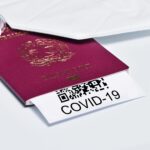Table of Contents
- Deconstructing the International Experience Canada (IEC) ProgramThe Critical Advantage: Securing an LMIA-Exempt Work PermitEligibility and Application: A Step-by-Step Pathway for Aspiring YouthA World of Opportunity: Navigating Participating Countries and Program StreamsFrequently Asked Questions
For young, ambitious individuals around the globe, the dream of gaining valuable international work experience in Canada is more accessible than ever. Central to this opportunity is the International Experience Canada (IEC) program, a cornerstone of Canadian immigration policy designed to foster cultural exchange and strengthen economic ties. This program provides a unique and streamlined pathway for youth from partner countries to obtain a Canadian work permit without the employer needing a Labour Market Impact Assessment (LMIA). This exemption is a significant advantage, removing one of the most substantial hurdles in the temporary foreign worker process. Understanding the nuances of the IEC program, its various streams, and the powerful benefits of an LMIA exemption is the first step toward a successful professional journey in Canada.
Deconstructing the International Experience Canada (IEC) Program
The International Experience Canada (IEC) program is a government initiative managed by Immigration, Refugees and Citizenship Canada (IRCC) that facilitates temporary work opportunities for foreign youth. The foundation of the IEC program rests on bilateral Youth Mobility Agreements (YMAs) that Canada has established with over 30 countries and territories. These reciprocal agreements allow Canadian youth to travel and work abroad while enabling foreign youth to do the same in Canada. The core mission is to provide young people with the chance to immerse themselves in a new culture, enhance their language skills, and gain professional work experience that can shape their careers. The program is structured into three distinct streams, each tailored to different objectives and applicant profiles. Understanding which stream aligns with one’s personal and professional goals is crucial for a successful application.
The three streams of the IEC program are:
- Working Holiday: This is arguably the most popular and flexible stream. It provides participants with an open work permit, which is not tied to a specific employer. This unparalleled freedom allows individuals to work for almost any employer anywhere in Canada, change jobs as they wish, and even travel extensively before settling into a role. It is ideal for those who want to fund their travels while exploring different regions and job sectors within Canada. Applicants for this stream typically do not need a job offer before applying, making it a highly sought-after option for spontaneous and adventurous youth.
- Young Professionals: This stream is geared towards foreign youth who have a professional job offer in Canada that contributes to their professional development. The work permit issued under this category is an employer-specific work permit, meaning the holder must work for the employer named on their permit in the specified location and occupation. The job offered must be classified under a National Occupational Classification (NOC) Training, Education, Experience and Responsibilities (TEER) category 0, 1, 2, or 3. This stream is perfect for recent graduates and young professionals looking to advance their careers in a specific field.
- International Co-op (Internship): Designed for post-secondary students, this stream allows individuals to complete a work placement or internship in Canada that is required to complete their academic curriculum. Like the Young Professionals stream, this permit is employer-specific. Applicants must have a signed job offer or contract for an internship from a Canadian company before applying. The internship must be directly linked to the applicant’s field of study, providing invaluable, hands-on experience that complements their education.
The Critical Advantage: Securing an LMIA-Exempt Work Permit
Perhaps the most powerful feature of the International Experience Canada program is that all its work permits are exempt from the Labour Market Impact Assessment (LMIA) requirement. To appreciate the magnitude of this benefit, it is important to understand what an LMIA entails. An LMIA is a document that a Canadian employer may need to get before hiring a foreign worker. A positive LMIA confirms that there is a need for a foreign worker to fill the job and that no Canadian worker or permanent resident is available to do it. The process is often lengthy, expensive, and administratively burdensome for employers. They must conduct extensive recruitment efforts to prove they attempted to hire locally first, a process that can take weeks or even months and involves significant government fees and paperwork. This hurdle can deter many small and medium-sized businesses from hiring foreign talent, limiting opportunities for international workers.
By being LMIA-exempt, the IEC program completely bypasses this complex process. This creates a win-win situation for both the applicant and the Canadian employer. For the employer, particularly in the Young Professionals and International Co-op streams, it means they can hire international youth talent quickly and efficiently without the bureaucratic red tape. This gives them access to a global pool of skilled and motivated young people who bring diverse perspectives to the workplace. For the applicant, the LMIA exemption dramatically simplifies their journey to working in Canada. They do not have to wait for a prospective employer to navigate the challenging LMIA process. Instead, their eligibility is primarily based on their age, nationality, and ability to meet the program’s specific requirements, making the pathway more direct and predictable.
Key Takings: The Power of LMIA Exemption
- Reduced Processing Times: Employers can hire IEC participants much faster than through the standard Temporary Foreign Worker Program, as there is no need to wait for LMIA approval.
- Lower Costs for Employers: Businesses save on the significant government processing fees associated with an LMIA application.
- Simplified Hiring Process: The administrative burden on employers is vastly reduced, encouraging more businesses to participate and offer jobs to international youth.
- Greater Applicant Autonomy: Applicants in the Working Holiday stream have complete freedom to choose their employer upon arrival, while all IEC applicants benefit from a more streamlined application system.
- Expanded Access to Talent: Canadian companies gain a competitive edge by easily accessing a motivated, pre-approved pool of young international talent.
Eligibility and Application: A Step-by-Step Pathway for Aspiring Youth
Navigating the application process for the International Experience Canada (IEC) program requires careful attention to detail, but it is a structured and manageable pathway. The first and most fundamental requirement is nationality. Only citizens of countries that have a Youth Mobility Agreement (YMA) with Canada are eligible to apply. The specific age limits, which typically range from 18 to 30 or 18 to 35, vary by country, so it is essential to check the specific criteria for one’s country of citizenship. Beyond nationality and age, all applicants must demonstrate that they have sufficient funds to cover their initial expenses in Canada—usually CAD $2,500. They must also have health insurance for the entire duration of their stay, which is a mandatory and non-negotiable requirement checked at the port of entry. Finally, applicants must be admissible to Canada, meaning they have no serious criminal or medical issues that would prevent their entry.
The application process itself is managed through a pool system, designed to ensure fairness and manage demand. The steps are as follows: First, a potential candidate must complete an online questionnaire to confirm their preliminary eligibility for one of the IEC streams. If they appear eligible, they will receive a personal reference code to create a secure IRCC account. Using this account, they will build and submit their IEC profile, which officially places them into a pool of candidates for their country and chosen stream. IRCC then conducts regular rounds of invitations, randomly selecting candidates from the pools and issuing them an Invitation to Apply (ITA). This is a critical step; simply being in the pool does not guarantee an invitation. Once an ITA is received, the candidate has a limited time—typically 10 days to accept it and another 20 days to submit their complete work permit application, including all necessary supporting documents and processing fees. Diligence and preparedness are key to meeting these strict deadlines and securing a place in this highly beneficial program.
A World of Opportunity: Navigating Participating Countries and Program Streams
The International Experience Canada program is a testament to Canada’s commitment to global mobility and cultural exchange, but its availability is exclusively tied to the bilateral agreements Canada maintains. This means that the first step for any hopeful applicant is to confirm that their country of citizenship has an active Youth Mobility Agreement (YMA) with Canada. These agreements are carefully negotiated and dictate the terms of participation, including the all-important age eligibility and the total number of spots, or quotas, available each year. As the program’s popularity continues to soar, these quotas can be filled quickly, especially for high-demand countries. For instance, recent developments have shown Canada actively expanding its global partnerships. While established agreements with countries like Australia, the United Kingdom, France, and Japan remain robust, there is always movement toward including new nations. Hypothetically, if Canada were to finalize new agreements with emerging economic partners, it would open up thousands of new opportunities for youth from those regions, further diversifying Canada’s talent pool.
Prospective applicants must remain vigilant and monitor the official IRCC website for updates on pool openings, quota numbers, and the status of rounds of invitations for their specific country and desired stream. The availability can fluctuate significantly throughout the year. For example, the Working Holiday stream for a country like Ireland or South Korea might see its quota exhausted within months of opening, whereas the Young Professionals stream for another country might have availability for a longer period. This dynamic nature requires a proactive approach. It is not just about meeting the eligibility criteria but also about strategic timing. By staying informed about the program’s cycles and their country’s specific quota, applicants can significantly improve their chances of receiving that coveted Invitation to Apply (ITA) and embarking on a life-changing professional and personal adventure in Canada.
Frequently Asked Questions
What is the International Experience Canada (IEC) program?
The IEC is a Canadian government program that provides youth from over 30 partner countries with the opportunity to obtain a temporary work permit. It is based on bilateral Youth Mobility Agreements and is designed to foster cultural exchange and provide international work experience.
What does LMIA-exempt mean for a work permit?
An LMIA-exempt work permit means the Canadian employer does not need to obtain a Labour Market Impact Assessment before hiring a foreign national. This significantly simplifies and speeds up the hiring process for both the employer and the IEC applicant.
How do I apply for an IEC work permit?
The process begins by creating an online profile and entering a pool of candidates for your country and chosen stream (Working Holiday, Young Professionals, or International Co-op). If selected, you will receive an Invitation to Apply (ITA) and must then submit a formal work permit application.
What are the three main streams under IEC?
The three streams are the Working Holiday, which offers an open work permit; the Young Professionals, for those with a professional job offer; and the International Co-op (Internship), for students completing a work placement related to their studies.
Do I need a job offer to apply for IEC?
It depends on the stream. For the Working Holiday stream, a job offer is not required before applying. However, for the Young Professionals and International Co-op (Internship) streams, a pre-arranged job offer is a mandatory requirement.
What is an Invitation to Apply (ITA) in the context of IEC?
An Invitation to Apply (ITA) is an official invitation issued by IRCC to candidates in the IEC pools. Receiving an ITA allows a candidate to formally apply for a work permit under their selected IEC stream.
Talk to us to find out more. ->
The content above is not intended to provide legal advice or opinions of any kind and may not be used for professional or commercial purposes.







